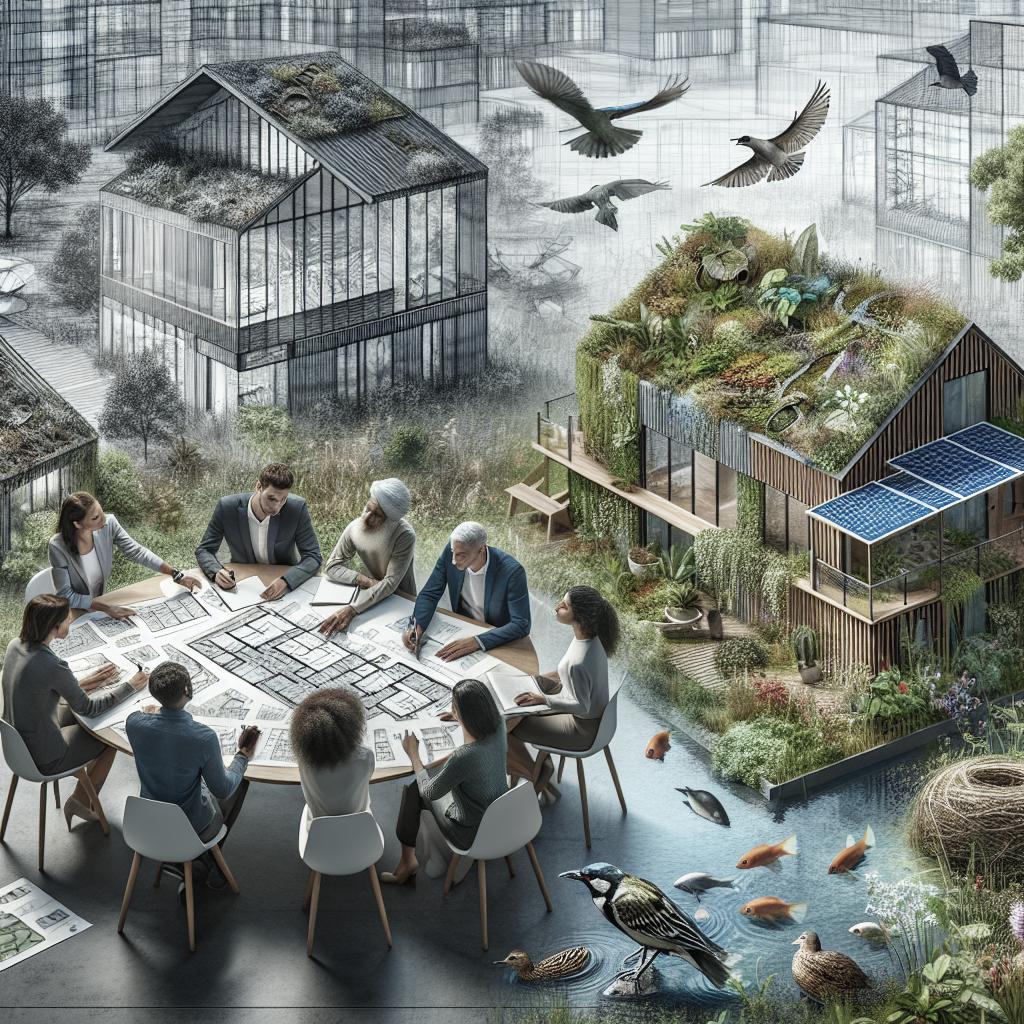“`html
How to Support Local Ecosystems Through Building Projects
As the global demand for development increases, building projects play a crucial role in shaping our environments. However, these developments can drastically affect local ecosystems. It’s essential to integrate sustainability and conservation into construction practices to ensure minimal disruption and promote biodiversity. This article provides guidance on thoughtful dredge and fill practices, developing comprehensive Environmental Impact Assessments, creating effective buffer zones, incorporating green infrastructure solutions, utilizing Best Management Practices, and monitoring environmental changes. By implementing these strategies, builders and developers can minimize their ecological footprint and contribute positively to the surrounding natural habitat.
Dredge and Fill Thoughtfully
Dredging and filling operations are often necessary in building projects, especially those near water bodies. However, these activities significantly impact local ecosystems by altering habitats and affecting water quality. To mitigate these effects, projects should adhere to strict regulatory guidelines that aim to protect aquatic environments. Utilizing less invasive techniques and choosing equipment that creates minimal disruption can significantly reduce the impact on local wildlife.
Moreover, scheduling these activities during off-peak seasons for marine life can further minimize harm. Engaging with environmental experts to assess potential risks and develop strategies to limit ecological disturbances is crucial. By doing so, project developers can ensure their work is in harmony with the local environment, promoting long-term sustainability.
Develop an Environmental Impact Assessment (EIA)
An Environmental Impact Assessment (EIA) is a critical tool for understanding the potential effects of a proposed project on the environment. It involves a series of studies and analyses to accurately predict environmental impacts, offering a basis for informed decision-making. By conducting a comprehensive EIA, developers can identify sensitive areas and prioritize ecosystem preservation in their planning and operational processes.
EIAs encourage transparency and public participation, ensuring community concerns are addressed. This fosters a cooperative approach to building, allowing for innovative solutions that balance development needs with environmental health. Incorporating findings from the EIA into project designs ensures that protective measures are built into the structure and operations of a development from the outset.
Create Buffer Zones and Protection Areas
Buffer zones and protection areas act as important shields for ecosystems from construction activities. These designated regions provide a safe distance between construction sites and sensitive habitats, helping to limit direct impacts on flora and fauna. By identifying and implementing effective buffer zones, developers can reduce disturbances and promote conservation.
Establishing these zones requires careful planning and local ecological knowledge. Collaborating with ecologists can help identify critical areas that require protection and ensure that buffer zones are strategically designed. These areas not only protect local wildlife but also enhance the overall aesthetic and ecological value of the surrounding environment.
Incorporate Green Infrastructure Solutions
Green infrastructure solutions play a vital role in harmonizing development with nature. By integrating natural processes into urban design, these solutions help manage water naturally, reduce heat, and enhance biodiversity. Techniques such as green roofs, rain gardens, and permeable pavements not only support the ecosystem but also provide functional benefits like improved air quality and energy efficiency.
Implementing green infrastructure requires innovation and a commitment to sustainable practices. In urban settings, these solutions can transform concrete jungles into vibrant, living spaces that support a myriad of plant and animal species. Developers are encouraged to explore and include these methods in their projects to promote long-term ecological and human health.
Utilize Best Management Practices (BMPs)
Best Management Practices (BMPs) are essential for minimizing environmental impact during construction. These practices encompass a wide range of strategies, from erosion control to waste reduction, aimed at reducing pollution and conserving resources. By adhering to BMPs, developers not only protect local ecosystems but also ensure compliance with environmental regulations.
Training construction teams on the latest BMPs ensures effective implementation and promotes a culture of sustainability within the workforce. Regular evaluation of these practices helps identify areas for improvement, fostering continuous advancement in environmentally responsible building techniques.
Monitor and Document Any Changes in the Environment
Post-construction monitoring is critical to understanding the ongoing impact of a building project on local ecosystems. By systematically documenting changes, developers can assess the effectiveness of their environmental strategies and make necessary adjustments. This process helps to ensure that the goals of conservation and sustainable development are being met.
Continuous data collection and analysis provide valuable insights into the long-term effects of development. Collaboration with researchers and local communities in monitoring efforts can lead to a more comprehensive understanding of environmental shifts and foster a shared responsibility in protecting natural resources.
Next Steps
| Strategy | Description |
|---|---|
| Dredge and Fill Thoughtfully | Utilizing less invasive techniques and scheduling during off-peak seasons to minimize environmental disruption. |
| Develop an Environmental Impact Assessment (EIA) | Conducting comprehensive studies to predict and mitigate environmental impacts, fostering informed decision-making. |
| Create Buffer Zones and Protection Areas | Implementing designated regions to reduce disturbances and promote conservation of local habitats. |
| Incorporate Green Infrastructure Solutions | Integrating natural processes in urban design to manage water, reduce heat, and enhance biodiversity. |
| Utilize Best Management Practices (BMPs) | Adopting strategies such as erosion control and waste reduction to minimize environmental impact. |
| Monitor and Document Any Changes in the Environment | Continuous assessment of environmental impacts to ensure conservation goals are achieved. |
“`
